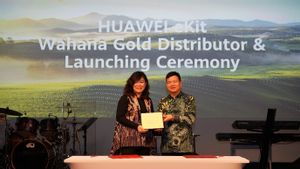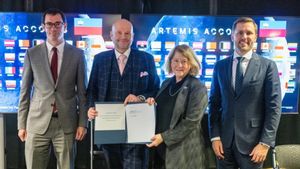JAKARTA - NASA recently launched a telescope into space to measure the amount of light reflected from the Moon. This is to improve the accuracy and consistency of measurements among Earth-observing satellites.
The telescope, Lunar Spectral Irradiance, or air-LUSI, flew over NASA's ER-2 craft from March 12 to 16 to accurately measure the amount of light reflected from the Moon.
Reflected moonlight is a steady source of light that researchers use to improve the accuracy and consistency of measurements among Earth-observing satellites.
Using the Moon as a tuning fork, researchers can more easily compare data from different satellites to see global changes over long periods of time.
“The Moon is very stable and is not influenced by factors on Earth such as climate on a large scale. It's an excellent calibration reference, an independent benchmark, against which we can tune our instruments and see what's going on with our planet," said Kevin Turpie, principal investigator of water-LUSI and research professor at the University of Maryland, College Park.
To improve the accuracy of the lunar reflectance model, the air-LUSI measurements are highly accurate, with an uncertainty of less than 1 percent. During last month's flight, air-LUSI measured the Moon for four nights just before the full moon.
"Once the LUSI-water measurements are used to increase the accuracy of the total amount of light coming from the Moon, we can make more accurate Earth measurements extensively using current and future space observatories," said Turpie.
For the record, NASA already has more than 20 Earth-observing satellites that give researchers a global perspective on Earth's interconnected system.
Many of them measure light waves that are reflected, scattered, absorbed, or emitted by the earth's surface, water and atmosphere.
For information, air-LUSI is a telescope that measures how much light is reflected from the moon's surface to assess the amount of energy received by Earth-observing satellites from moonlight.
Meanwhile, the ER-2 is a high-altitude aircraft flying at an altitude of 70,000 feet, above 95 percent of the atmosphere, which can scatter or absorb reflected sunlight.
The English, Chinese, Japanese, Arabic, and French versions are automatically generated by the AI. So there may still be inaccuracies in translating, please always see Indonesian as our main language. (system supported by DigitalSiber.id)













